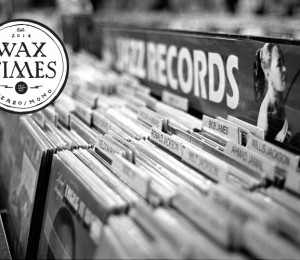Too many records. It’s a problem that strikes some, elludes others and can even require leasing storage facilities for a few. Keeping track of every album up to the 300th purchase or so is manageable, but for those without a freakishly keen recall ability, discographic databases are your best friend. So before your collection get’s out of hand, set aside some time to invest in a tool that gives you a brand new online community whose sole purpose is to document every record, ever. Did I mention it’s free?
Following registration, let’s add an album to the catalogue. The search bar at the top helps locate releases primarily by searching with one of the following criteria: artist name, album name, barcode or catalogue number. As an example, type in Supertramp and notice the results populated in the drop-down menu. Looks like the suggestions are not relevant and that’s common because the predictive search results are only a fraction of the sites content.
Try repeating searches with a different album identifier – like a catalogue code – if the first term doesn’t provide the correct result.
Hit enter and check out the proper search page with extended results. 34 artists are registered on discogs as Supertramp but it turns out the one I’m interested in is the third item down.
Now we’re on the main page for the band’s discography. I’m looking for their classic from 1979, Breakfast in America. There are 94 versions. This is a worst-case scenario but an unfortunately common one for classic albums and it requires being able to interpret a few extra identifiers on most records: catalogue codes and matrix runouts. First up, I’m checking out the spine on the jacket near the top, where some letters and numbers are usually printed; that’s the catalogue code. Next, where was it pressed and printed? Jackets and labels sometimes have an address or explicit statement regarding origin but if you can’t find one nbd, move on.
SP 3708 and it’s a domestic press since it says “Printed in U.S.A.” on the labels and the jacket has a Hollywood, California P.O. Box address. Now there are six choices: One, Two, Three, Four, Five, and Six. At this point, my only option is to preview each of the release pages until finding the one that exactly matches the album I have. The credits and notes sections are not always populated, but when information is there it helps ensure proper identification based on multiple factors.
Checking the pictures, I see there’s a barcode on the back of the jacket. Typing that into the search bar at the beginning would have been a shortcut through the entire tutorial. You’re welcome.
Add it to your collection and keep adding to your collection whether you already own a ton of records or buy a few every week. Knowing what you have all the time gets rough so just rely on the convenience of digital access to the information like the rest everyday life. Wait too long and the backlog becomes a built-in excuse not to get started. Crate Digger for iPhone syncs your collection to your device and works most of the time while the main site is also mobile optimized.
Never be without your record collection again.
Photo Credit: TV DiSKO via Compfight cc
Pressing Issues: Record Quality in Today’s Market Next Post:
RARE Record Fair – May 2014
























[…] this year, I discussed how to catalogue records with Discogs in this post, and most everything discussed here will build on the understanding of that process. If your […]
[…] as a new Discogs user. If you’ve not done so already take a look back to May’s article on cataloguing records, which will help you understand the steps […]
[…] for the ease of tracking your albums and insuring your collection. No matter what tool you use — discogs ftw — start early and keep up-to-date as you buy/add new albums to your shelves. The catalogue […]